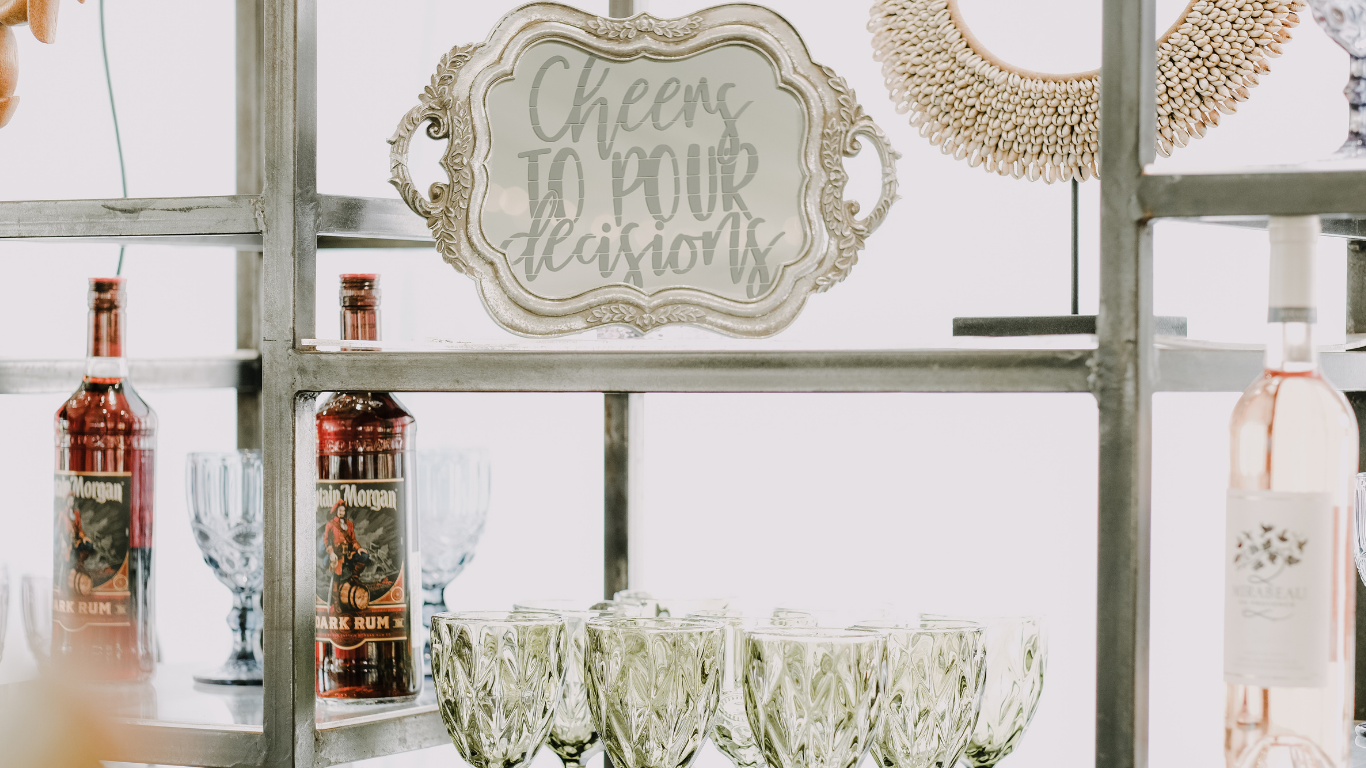Hey there, if you’re into drinks or just curious about what people are sipping on these days, you’ve come to the right spot. Liquors have been part of human culture for ages, from cozy evenings at home to big celebrations. They’re distilled spirits made from grains, fruits, or other stuff, and they come in all sorts of flavours and strengths. We will explore the best ones out there, focusing on the most popular brands globally and what’s hot in India. We’ll look at sales numbers, brand worth, and why these stand out.
Around the world, liquor sales are booming. In 2025, the industry is worth billions, with people loving everything from smooth whiskies to crisp vodkas. What’s cool is how local tastes mix with global trends. For example, in places like Korea and the Philippines, soju and rum rule, while India can’t get enough of whisky. We’ll cover the top sellers based on how many bottles fly off shelves, plus the ones with the highest brand value – think of that as how much the name itself is worth.
In India, the scene is massive. The country drinks more whisky than anywhere else, and homegrown brands lead the pack. Brands like McDowell’s and Royal Stag are everyday favorites, blending local grains with imported touches. But it’s not just about volume; quality matters too. Indian distillers are stepping up with premium options that rival international big shots.
This article will break it down simply. We’ll explore types, history, and the top picks. Whether you’re a newbie or a pro, you’ll find something useful. Remember, drinking is fun, but always keep it moderate. Let’s get into it!
What Makes a Liquor Stand Out?
You ever wonder why some liquors become household names while others fade away? It boils down to a mix of taste, story, and smart marketing. First off, flavor is king. A great liquor has balance – not too harsh, with notes that linger nicely. Take whisky; the good ones have hints of vanilla or smoke from aging in barrels. Then there’s the heritage. Brands with old roots, like those started in the 1800s, build trust. People love knowing their drink has history.
Price plays a big role too. Affordable options like many Indian whiskies sell tons because they’re easy on the wallet but still deliver. On the flip side, premium ones command higher prices for rarity or craft methods. In 2025, sustainability is huge. Brands using eco-friendly farming or recycled bottles attract younger crowds who care about the planet.
Marketing seals the deal. Think ads with celebrities or cool packaging. In India, cricket ties help brands like Royal Challenge connect with fans. Globally, social media buzz turns a drink viral. But reliability matters most – consistent quality keeps buyers coming back.
Cultural fit is key. In Asia, light spirits like soju pair with meals, while in the West, bold bourbons shine in cocktails. Trends shift; low-alcohol options are rising for health reasons. Ultimately, a top liquor feels right for the moment, whether solo or mixed. It’s about enjoyment without overdoing it.
A Quick History of Liquors
Liquors have a rich past that goes back thousands of years. It all started with distillation, a way to concentrate alcohol from fermented stuff. Ancient folks in Mesopotamia and China figured this out around 2000 BC, using it for medicine and rituals. By the Middle Ages, Arabs perfected the still, spreading the tech to Europe. Monks in Ireland and Scotland began making whisky from barley, while in France, brandy came from wine.
The 1500s saw rum born in the Caribbean from sugarcane, thanks to explorers. Vodka popped up in Russia and Poland, distilled from grains or potatoes. These drinks traveled with trade, becoming staples. In the 1800s, big changes hit. Column stills made production faster and cheaper, leading to brands like Johnnie Walker in Scotland.
India’s story kicked off in the British era. Soldiers brought whisky, but locals adapted it with molasses and grains, creating affordable versions. Post-independence, brands like McDowell’s grew huge. Today, India’s the world’s biggest whisky market.
Globally, prohibition in the US during the 1920s shook things, but liquors bounced back. Now, in 2025, craft distilleries experiment with local ingredients, like agave in Mexico or rice in Asia. History shows liquors evolve with people, from simple brews to refined sips. It’s a tale of innovation and tradition blended perfectly.
Different Types of Liquors Explained
Liquors come in varieties, each with unique vibes. Whisky, made from grains like barley or corn, ages in barrels for that woody taste. Scotch is smoky, bourbon sweet. Vodka’s neutral, distilled from grains or potatoes, great for mixing. Rum, from sugarcane, ranges from light for cocktails to dark for sipping.
Gin gets its kick from juniper berries and botanicals, perfect in tonics. Tequila and mezcal hail from Mexico’s agave plant – tequila’s clean, mezcal smoky. Brandy’s fruit-based, like cognac from grapes, warm and elegant.
Soju, Korea’s fave, is light and rice-based, often shared at meals. Baijiu, China’s powerhouse, ferments from sorghum, super strong. Liqueurs add sweetness, like Baileys with cream.
In India, whisky dominates, but gin and vodka rise. Each type suits moods – bold for nights out, smooth for relaxing. Proof levels vary; higher means stronger. Always check labels for origins. Trying types helps find favourites. Mix or neat, liquors offer endless fun.
Top 10 Most Sold Liquors in the World
When it comes to sheer numbers, these liquors top the charts in 2025, based on millions of cases sold. Leading is Jinro Soju from Korea, a light, versatile spirit enjoyed straight or mixed, outselling everything else. Second is Ginebra San Miguel Gin from the Philippines, a bold gin that’s a staple in local bars.
Third spot goes to McDowell’s No.1 Whisky, an Indian favourite blending grains for smooth affordability. Royal Stag Whisky, also Indian, follows with its peaty notes appealing to the masses. Smirnoff Vodka, a global icon, ranks fifth for its clean taste in countless cocktails.
Tanduay Rum from the Philippines claims sixth, known for its rich, aged flavours. Imperial Blue Whisky, another Indian entry, is seventh, prized for value. Johnnie Walker Whisky, the blended Scotch king, sits eighth with its range from Red to Blue Label.
Officer’s Choice Whisky from India is ninth, a budget go-to. Rounding out is Bacardi Rum, a Puerto Rican classic for mojitos and daiquiris.
These sellers reflect diverse tastes – Asia loves light spirits, India loves whiskies. Sales hit records thanks to growing markets and marketing. If you’re exploring, start here for crowd-pleasers.
Top 10 Liquor Brands by Brand Value
Brand value measures a name’s worth, beyond sales. In 2025, spirits dominate this list. Top is Moutai, Chinese baijiu at $74 billion, revered for prestige and tradition. Johnnie Walker follows at $8 billion, its Scotch blends symbolising luxury.
Wu Liang Ye, another baijiu, is valued $7.6 billion for quality. Hennessy Cognac, French elegance, is $6.2 billion. Jack Daniel’s Whiskey, an American classic, hits $4.8 billion with its charcoal mellowing.
National Cellar 1573, baijiu again, at $4.8 billion. Smirnoff Vodka, versatile giant, $3.8 billion. McDowell’s No.1 Whisky, Indian powerhouse, $3.7 billion.
Guinness, though beer-like, sneaks in, but focusing spirits, these shine. Value comes from reputation, marketing, and loyalty. Chinese brands rise due to domestic demand, while Western ones export widely. These aren’t just drinks; they’re status symbols.
Popular Liquor Brands in India
India’s liquor scene is whisky-central, with local brands ruling. McDowell’s Whisky leads with 32 million cases, owned by United Spirits, loved for its smoothness. Royal Stag, Pernod Ricard’s, is close behind at 31 million, growing fast with peaty variants.
Imperial Blue, also Pernod, sells 23 million, affordable and reliable. Officer’s Choice, from Allied Blenders, 21 million, once top but still strong in premium budget.
Blenders Pride, Pernod again, 10 million, premium blend. 8 PM by Radico Khaitan, 9.6 million, despite dip, revamping design. Royal Challenge, United Spirits, 9.1 million, cricket-linked.
Sterling Reserve, Allied, 3.9 million, targeting youth. Director’s Special, United Spirits, 3.6 million, steady grower. Iconiq White Whisky, Allied, 4.5 million, exploding with modern appeal.
These brands mix Scotch imports with Indian grains, keeping costs low. India’s market grows with rising incomes and urban life. Premium shifts happen, but classics endure.
Emerging Trends in the Liquor World for 2025
This year, liquors evolve with health and tech. Low-alcohol versions boom, like lighter sojus or vodkas under 30% ABV, for mindful drinking. Sustainable practices rise – brands use organic grains, cut water waste.
Craft spirits thrive, small distilleries experiment with local flavors, like Indian gins with spices. Ready-to-drink cocktails explode, convenient for home.
Asia leads growth, with baijiu and soju expanding West. Non-alcoholic mimics gain, tasting like real but zero buzz. Personalization via apps suggests mixes.
In India, premium whiskies surge, women drinkers increase. E-commerce makes rare bottles easy. Overall, it’s about balance – fun, responsible, innovative.
How to Enjoy Liquors Responsibly
Sipping liquors should be enjoyable, not risky. Know limits – one drink daily for women, two for men. Hydrate between sips, eat food to slow absorption.
Choose quality over quantity; savor flavors. Mix with water or soda for milder. Never drive after drinking; use rideshares.
In groups, watch friends. If issues arise, seek help. Responsible enjoyment builds good memories.
Pairing Liquors with Food Like a Pro
Pairing boosts meals. Whisky with cheese or chocolate enhances richness. Vodka with seafood keeps it light. Rum with spicy Caribbean food balances heat.
Gin with herbs complements salads. Tequila with tacos adds zest. Experiment – no strict rules, just what tastes good.
In India, whisky with kebabs or curries works wonders. Start simple, build from there.
That’s a wrap on top liquors. From global giants to Indian favorites, there’s something for everyone. Stay curious and sip smart.
FAQs
What is the most sold liquor in the world?
Jinro Soju tops the list, popular in Korea and beyond for its light taste.
Which liquor brand is best in India?
McDowell’s No.1 Whisky leads in sales, known for affordability and quality.
Are there healthy liquor options?
Look for low-alcohol or organic varieties, but moderation is key.
What’s the difference between liquor and beer?
Liquors are distilled spirits, stronger; beer is fermented, milder.
How do I start trying new liquors?
Begin with samples or small bottles, mix in cocktails to ease in.




